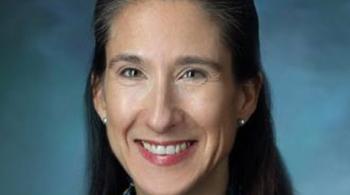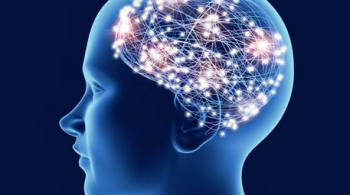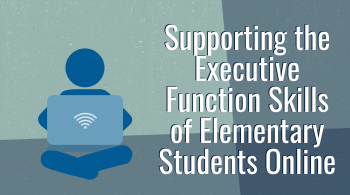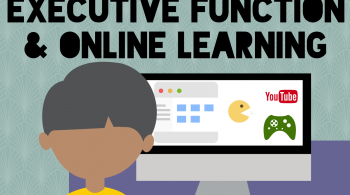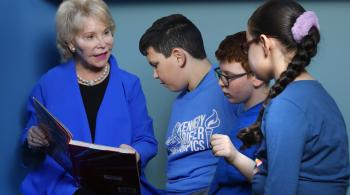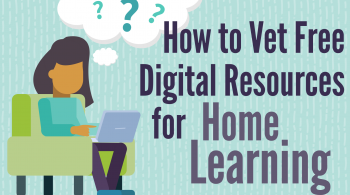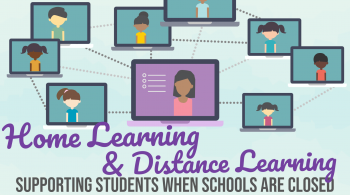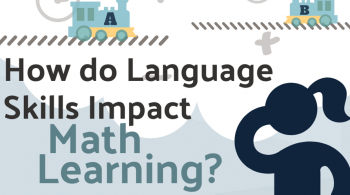By Amanda Hughes, Fellow at the Center for Innovation and Leadership in Special Education at Kennedy Krieger Institute
April 4, 2017

There are a lot of misconceptions circulating about individuals with autism spectrum disorder (ASD). In order to fully meet the needs of students with ASD and support them in inclusive classrooms, it is important to have accurate information about their strengths and challenges. This post clarifies some common myths about autism spectrum disorder and offers resources for further information.
MYTH: Everyone with autism is either non-verbal or a savant.
FACT: ASD is a neurodevelopmental disorder that occurs on a spectrum. According to the Diagnostic and Statistical Manual of Mental Disorders, ASD is characterized by 1) deficits in social communication and interaction across contexts, and 2) restricted and repetitive patterns of behavior, interests, or activities (American Psychiatric Association, 2013). These impairments, however, vary widely in terms of severity, impact on daily living, and effects on classroom performance. Language deficits, for instance, can range from impaired social communication to poor comprehension to a lack of speech entirely. Some adults with ASD are able to live independently, while others require a great deal of support. The diagnosis of ASD covers a broad range of functioning and includes the former diagnoses of Asperger’s disorder, childhood disintegrative disorder, and pervasive developmental disorder. While the media tends to portray the extreme ends of the autism spectrum (think Rain Man), individuals with ASD have a variety of strengths and needs (Autistic Self Advocacy Network, 2017). It is important for teachers to provide students with personalized interventions that are based on their unique pattern of needs rather than the diagnosis alone.
MYTH: People with autism are best suited for jobs that entail repetitive tasks.
FACT: Since autism is a spectrum disorder, there is no specific type of job that will be appropriate for all individuals with ASD. While many adults with ASD may enjoy repetitive tasks, it is incorrect to assume a job is a good match solely based on a disability label. Individuals with ASD have many diverse strengths, talents, and skills that would benefit employers. Unfortunately, the unemployment rate is estimated to be between 50% and 75% for adults with ASD, and many of those who do have jobs are underemployed (Hendricks, 2010). One reason for this is that individuals with ASD often lack the social skills necessary to be successful during job interviews and in the workplace. Specialisterne is one organization devoted to helping individuals with ASD find and maintain employment. They match employees with ASD with a coach who guides them through the social situations encountered at work (Cook, 2012). Ultimately, it is important to take into account the strengths, needs, interests, and preferences of the person pursuing employment. Visit the Itineris website to learn more about a program that is taking such an approach.
This has important implications for teachers working with students with ASD. Students should have an opportunity to explore various career paths throughout their school years, and educators should not limit students’ options simply because they have ASD. Transition plans should be created with the students’ skills and interests in mind. In addition, teachers should not rule out college opportunities for their students with ASD. Teachers have a responsibility to help students develop skills (including social skills) that will enable them to be successful in their chosen post-secondary education and/or career path.
MYTH: People with autism cannot form relationships.
FACT: Although social interaction is impaired in people with ASD, this does not mean they cannot form relationships with others. Individuals with ASD can and do have fulfilling relationships with family, friends, spouses, and children. In contrast to the previously dominant idea that they prefer social isolation, recent studies have demonstrated that most people with ASD want to form relationships with others (Brownlow, Rosqvist, & O’Dell, 2015). Personal testimonies by individuals on the spectrum support this finding. Despite such desire, it is still difficult for people with ASD to navigate social relationships and understand social cues. Social media and other forms of online networking can be useful in helping those with ASD form and maintain relationships with others both on and off the spectrum. In addition, it is important for those without ASD to understand the perspective of their friends on the spectrum. Individuals with ASD, for instance, might be blunt and will not sugarcoat their thoughts in a way that is expected in typical social situations, which can offend others. As long as individuals without ASD are sensitive to such differences, genuine and long-lasting social relationships are possible between individuals with and without ASD.
Teachers should create classroom environments that support students with ASD in forming social relationships with their classmates. Students with ASD benefit from frequent opportunities to interact with their peers with and without ASD in inclusive environments. In addition, teachers can explicitly educate other students on how to form and maintain friendships with their classmates on the spectrum. Teachers of younger students can use this online book from Sesame Street to start the conversation. Visit the Arc Autism Now website for resources on supporting individuals with ASD in social relationships.
MYTH: Vaccines cause autism.
FACT: While there is no known single cause of ASD, there is no evidence to support a link between vaccines and ASD (American Academy of Pediatrics, 2017). Thimerosal, which used to be a common vaccine ingredient, was once thought to have caused ASD. Since thimerosal has been removed from vaccines, however, the prevalence of ASD has increased rather than decreased (Center for Disease Control and Prevention, 2015). The American Academy of Pediatrics has compiled a list of the research studies that demonstrate there is no link between vaccines and ASD. Although there is no evidence that vaccines cause ASD, there are certain environmental and genetic factors that are associated with a higher risk of ASD due to their effect on brain development. There are currently 61 genetic variations that are associated with ASD risk, and repeated or deleted sections of DNA and chromosomal abnormalities have also been implicated (Autism Speaks, 2017). Environmental risk factors associated with ASD include advanced paternal age (over 34), poor maternal physical and mental health, maternal prenatal medication use, maternal exposure to chemicals, preterm birth, complications during birth, low birth weight, jaundice, and post birth infections (Karimi, Kamali, Mousavi, & Karahmadi, 2016). Mumps, measles, and rubella are among the infections associated with an increased risk of ASD, so the preventative MMR vaccine helps mitigate the risk of developing ASD from these infections. While teachers are not in a position to offer medical advice to parents, it is still important to be informed about this issue. Parents may approach teachers to ask what they know about the link between vaccines and ASD. If that happens, teachers can direct parents to the evidence-based resources included here.
Overall, it is important to treat students and adults with autism spectrum disorder as individuals with diverse talents, strengths, and needs. Hopefully this post helps you support and value these unique students.
References:
American Academy of Pediatrics. (2017). Vaccine safety: Examine the evidence. In Safety and Prevention. Retrieved from https://www.healthychildren.org/English/safety-prevention/immunizations/Pages/Vaccine-Studies-Examine-the-Evidence.aspx
American Psychiatric Association (2013). Diagnostic and statistical manual of mental disorders (5th ed.)
Autism Speaks. (2017). World’s largest autism genome database shines new light on many ‘autisms’. Retrieved from https://www.autismspeaks.org/science/science-news/world %E2%80%99s-largest-autism-genome-database-shines-new-light-many-%E2%80%98 autisms%E2%80%99?utm_source=email&utm_medium=text-link&utm_ campaign =espeaks
Autistic Self Advocacy Network. (2017). About Autism. Retrieved from http://autisticadvocacy.org/home/about-asan/about-autism/
Brownlow, C., Rosqvist, H.B., & O’Dell, L. (2015). Exploring the potential for social networking among people with autism: Challenging dominant ideas of ‘friendship’. Scandinavian Journal of Disability Research, 17(2), 188-193. http:://dx.doi.org/10.1080/15017419.2013.859174
Center for Disease Control and Prevention (2015). Timeline: Thimerosal in vaccines (1992-2010). In Vaccine Safety. Retrieved from https://www.cdc.gov/vaccinesafety/concerns/thimerosal/timeline.html
Cook, G. (2012, November 29). The autism advantage. The New York Times Magazine. Retrieved from http://www.nytimes.com/2012/12/02/magazine/the-autism-advantage.html
Hendricks, D. (2010) Employment and adults with autism spectrum disorders: Challenges and strategies for success. Journal of Vocational Rehabilitation, 32, 125-134. DOI: 10.3233/JVR-2010-0502
Itineris, Inc. (2016). What we do. Retrieved from http://www.itinerisbaltimore.org/what-we-do/
Karimi, P., Kamali, E., Mousavi, S.M., & Karahmadi, M. (2016). Environmental factors influencing the risk of autism. Journal of Research in Medical Sciences, 21(11), 1-12.
Sesame Workshop (2017). Storybook. In Sesame Street and Autism. Retrieved from http://autism.sesamestreet.org/storybook-we-are-amazing/
Specialisterne Foundation. (n.d.) About us. Retrieved from http://specialisternefoundation.com/about/
The Arc of the United States, Inc. (2017). Individuals with autism and relationships. In At Home. Retrieved from http://autismnow.org/at-home/relationships/




